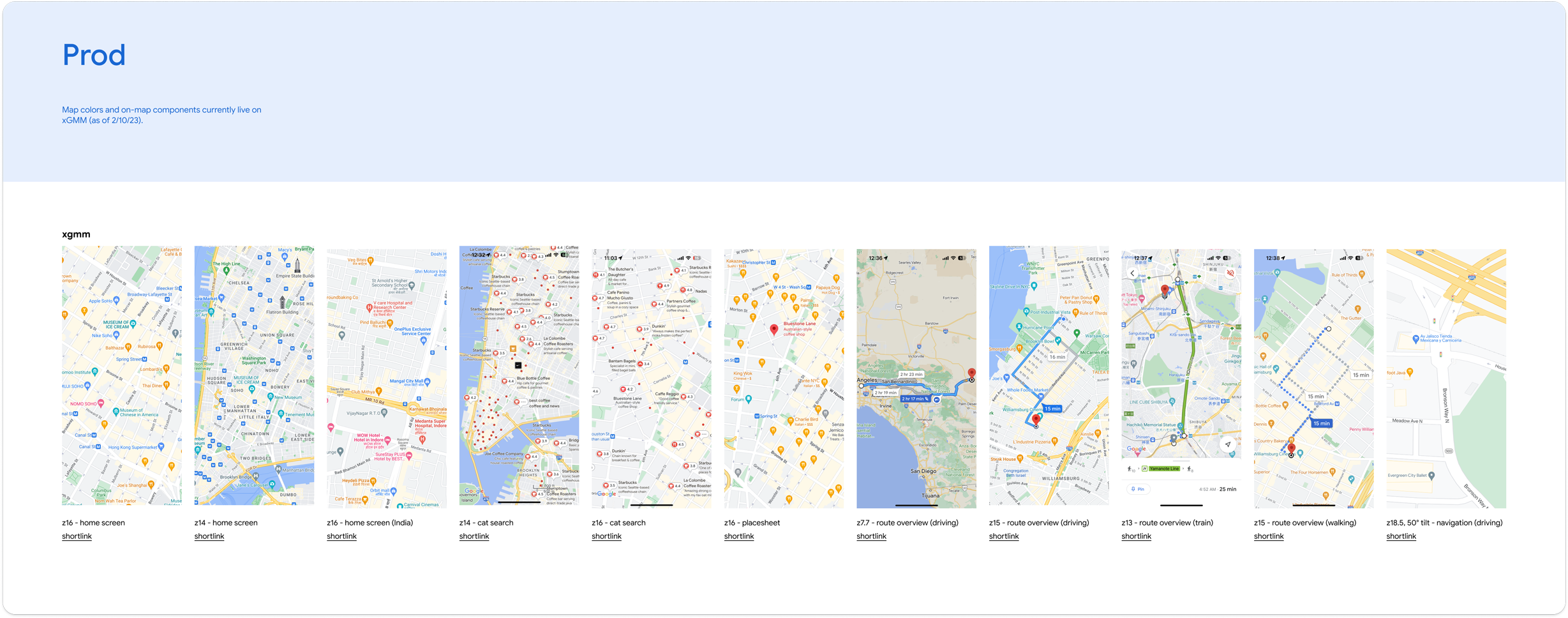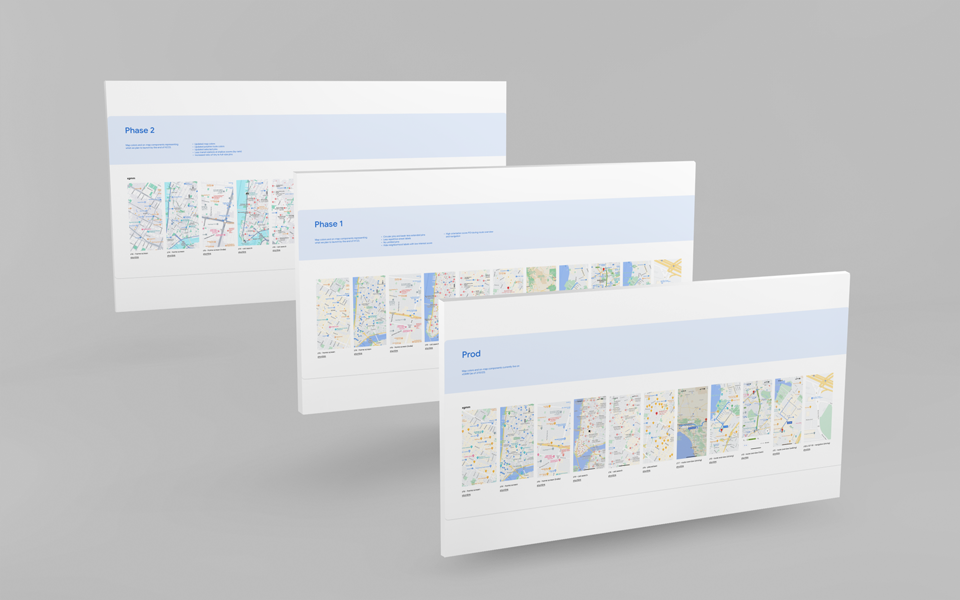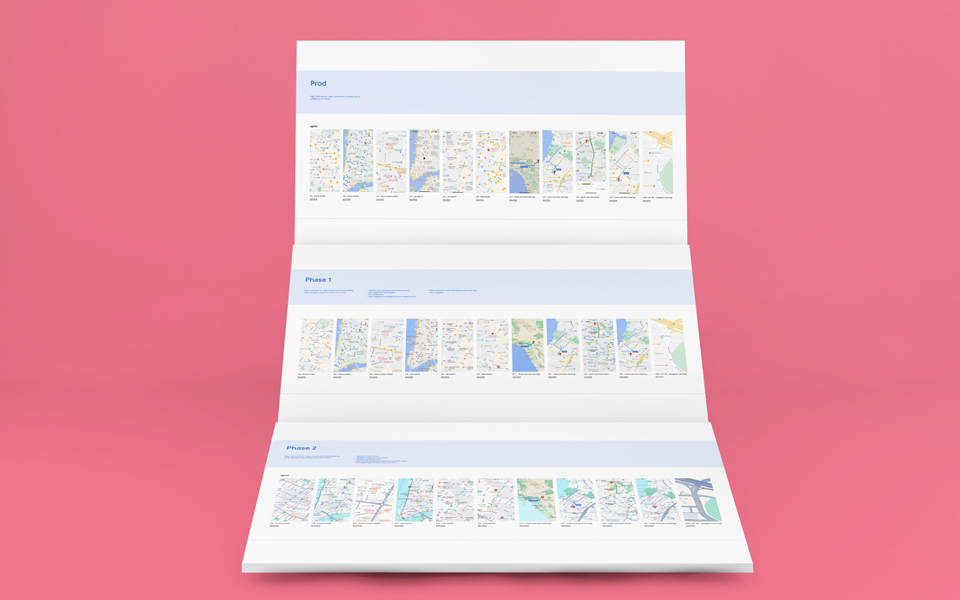An approach to align the Future Maps team with Google's Maps Zen launches in order to tell a more cohesive story to users.
I led the creation of the Future Maps library, a groundbreaking initiative aimed at redefining on-map content across all states and screens, with planned launches for both Phase 1 and Phase 2 in 2023. This project involved the meticulous design of three versions for each viewport – production, Phase 1, and Phase 2 – ensuring a seamless and evolving user experience. Additionally, I collaborated with another designer to globally refine the Maps symbol library, influencing common elements across the platform.

Based on the research insights, a comprehensive plan was developed to roll out the Future Maps library in two phases in 2023. Clear objectives were set, emphasizing the need for dynamic on-map content that aligns with the user's context. Collaborative planning sessions were conducted with the Maps team to ensure alignment with broader product roadmaps and strategic goals.
Exploratory Options: A significant portion of the project was dedicated to exploring innovative options for on-map experiences. This involved pushing the boundaries of existing ideas and proposing new concepts to align with the core goal of enhancing the relevance of content and richness of representation within Maps Zen. This exploration aimed to provide users with a more engaging and personalized experience, enabling them to explore and navigate the world with unparalleled ease.



The design phase focused on creating three versions of each viewport, carefully considering the production environment, Phase 1, and Phase 2 requirements. Collaborative workshops with another designer were also held to globally refine the Maps symbol library, ensuring consistency across the platform. Special attention was given to refining and pushing existing ideas to create a more holistic framework for better user understanding.

Prototypes for each version of the Future Maps library were tested iteratively with users, incorporating feedback to enhance the user experience. A key aspect of testing involved evaluating the global refinement of the Maps symbol library to ensure consistency and clarity.
Continuous communication channels were established to address any unforeseen challenges and ensure the accurate translation of design intent into the live environment.

The successful implementation of the Google Future Maps library marked a significant milestone in redefining on-map content. The phased approach ensured a smooth transition for users while continuously introducing new features and improvements. The collaboration with another designer on the Maps symbol library contributed to a globally refined and consistent user experience.
Are you working on something great? I would love to help make it happen! Drop me a note and start your project right now!
Phone +1-360-200-8961
Address Remote, United States